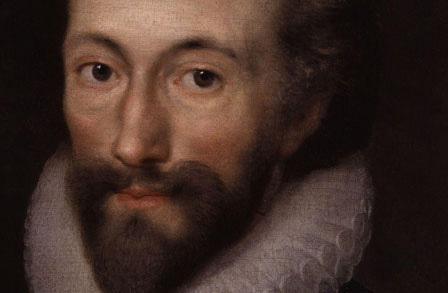The Poetry of Earth: Short Questions: Solved
1. “The poetry of earth is never dead”- What does the poet mean by it?
Answer: By this, the poet means that the songs and music of nature will never stop. It would go on without any break. Nature and poetry, i.e., music, are so linked that they will continuously evolve. Any change in season or the weather will not affect the continuity of the music of Nature. In summer, the songbirds, tired of the hot sun, take shelter in the cooling shade and stop singing. Still, then the songs of nature are heard. The tiny Grasshopper sings merrily as he moves about from hedge to hedge in the meadow. He luxuriates in the gaiety and abundance of the season. Similarly, in the midst of a frosty, silent, bleak winter evening, the poetry of the earth continues. The shrill cry of the Cricket breaks the silence of the winter evening. Thus, the poetry of the earth never ceases.
2. “When all birds are faint…”- Why are all birds faint? What do the birds do? Who plays the role of the birds, and how?
Answer: All songbirds are faint and feel tired because of the sun’s scorching heat in the summer season.
The birds are the natural poets of the earth. They sing in joy and express the mood of the season. But, here, the birds are exhausted by the intolerable heat of the summer. So they take shelter in the shady trees and keep silent.
When the birds take shelter in the cool places and stop singing, the Grasshopper fills the void. He sings merrily and expresses immense joy as he moves from hedge to hedge in the freshly-mown grass in the meadow. In the absence of the singing birds, he becomes the bard of summer.
3. “A voice will run…”- Whose voice is this? Where will the voice run? What is the significance of the voice?
Answer: This is the voice of the Grasshopper in Keats’s sonnet, ‘The Poetry of Earth.’
The voice will run from hedge to hedge in the freshly-mown grass in the meadow.
In the summer, songbirds are exhausted by the intolerable heat of summer and take shelter in the cool shade of the leafy trees and stop singing the summer’s music. The grasshopper takes the role of the poet and sings songs of the summer. Thus, the poetry of the earth is sustained.
4. …from the stove their shrills/ The Cricket’s song”. What role does Cricket play here?
Answer: In this sonnet, the Cricket performs the role of the poet in the winter. Winter comes with its icy touch. The forest makes the winter evening silent. Nature is now bleak and desolate. In such frosty and silent weather, the Cricket, the tireless bard of winter, keeps the earth’s music alive.
5. What is Keats’ observation on the songs of the Grasshopper and the Cricket?
Answer: This poem reveals the poet’s love of nature. Keats finds beauty in all things, trivial or magnificent. Both the Grasshopper and the Cricket are tiny insects, but the poet has used them as powerful singers of nature. The poet helps us to enrich our understanding of nature. He provides us with the knowledge and foresight that all things have a purpose. He shows how the balance of nature is sustained and the music of the earth is alive.
6. What is the rhyme scheme of the sonnet?
Answer: The Poetry of Earth is a Petrarchan sonnet. The poem is made up of an octave and a sestet. The octave is made up of two quatrains, each following the abba rhyme scheme. And the sestet is made up of two tercets, each following the rhyme scheme CDE.
7. “…when the frost/ Has wrought a silence”- What picture does draw here?
Answer: Here, the poet draws the picture of a lone evening. Keats uses the words like ‘The cricket song,’ ‘silence,’ and ‘the frost’ to represent a picture of the winter. The frost makes the winter silence. Nature is now bleak and desolate, and in such weather, the Cricket has become the bard of the winter. In the background of silence and lifelessness, the Cricket infuses new energy and introduces new hopes.
8. “…he has never done/with his delights”- Who is ‘he’? What does he do? What does the extract mean?
Answer: Here, ‘he’ is the Grasshopper.
In the summer, when all birds are tired and take shelter in the cool shade of the trees, then the Grasshopper comes forwards and sings in joy. He keeps the flow of the song of Nature alive. He expresses immense joy and becomes the bard of the summer.
The extract shows the tireless effort of the Grasshopper in making Nature vibrant with his songs. He is very much delighted. His delight never comes to an end. Therefore, he goes on singing joyfully, keeping the song of the earth even continuing.
9. “ He rests at ease…”- Who is ‘he’ here? Where does the rest? How does he enliven Nature?
Answer: Here, ‘he’ is the Grasshopper in this poem.
In the absence of the songbird, The Grasshopper fills up the void in nature with his song. But whenever he feels tired, he takes rest beneath some pleasant weed only to resume his song with renewed energy.
When all songbirds stop singing, the Grasshopper continues the poetry of the earth. He moves from the hedge to hedge in the meadow singing the delightful song of the summer luxury. Thus, When the whole countryside seems to be tired and exhausted, the Grasshopper only brings joy.
The Poetry of Earth: Very Short Questions: Solved
1. Who invites Keats to compose the poem “The Poetry of Earth”?
A: One of Keats’s friends, Leigh Hunt, invited him to compose this poem.
2. What does Keates present as the music of winter in this poem?
A: In this poem, the poet represents the songs of the Cricket as the music of winter.
3. What does Keats present in the octave of this poem?
A: In the octave of this poem, Keats presents the voice of the Grasshopper as the music of summer.
4. Why do the birds hide in cooling trees?
A: The birds hide in cooling trees because they are exhausted by the scorching heat of the summer, and hence they want to take a rest.
5. Which insect carries the song of the winter in this poem?
A: In this poem, the Cricket carries the song of winter.
You can also refer to The Poetry of Earth: Analysis here.
Some online learning platforms provide certifications, while others are designed to simply grow your skills in your personal and professional life. Including Masterclass and Coursera, here are our recommendations for the best online learning platforms you can sign up for today.
The 7 Best Online Learning Platforms of 2022
- Best Overall: Coursera
- Best for Niche Topics: Udemy
- Best for Creative Fields: Skillshare
- Best for Celebrity Lessons: MasterClass
- Best for STEM: EdX
- Best for Career Building: Udacity
- Best for Data Learning: Pluralsight













